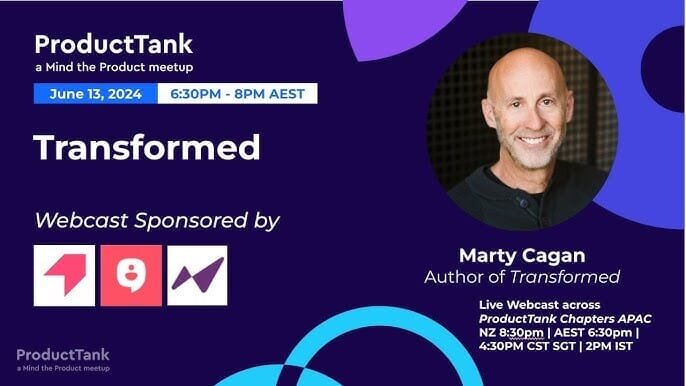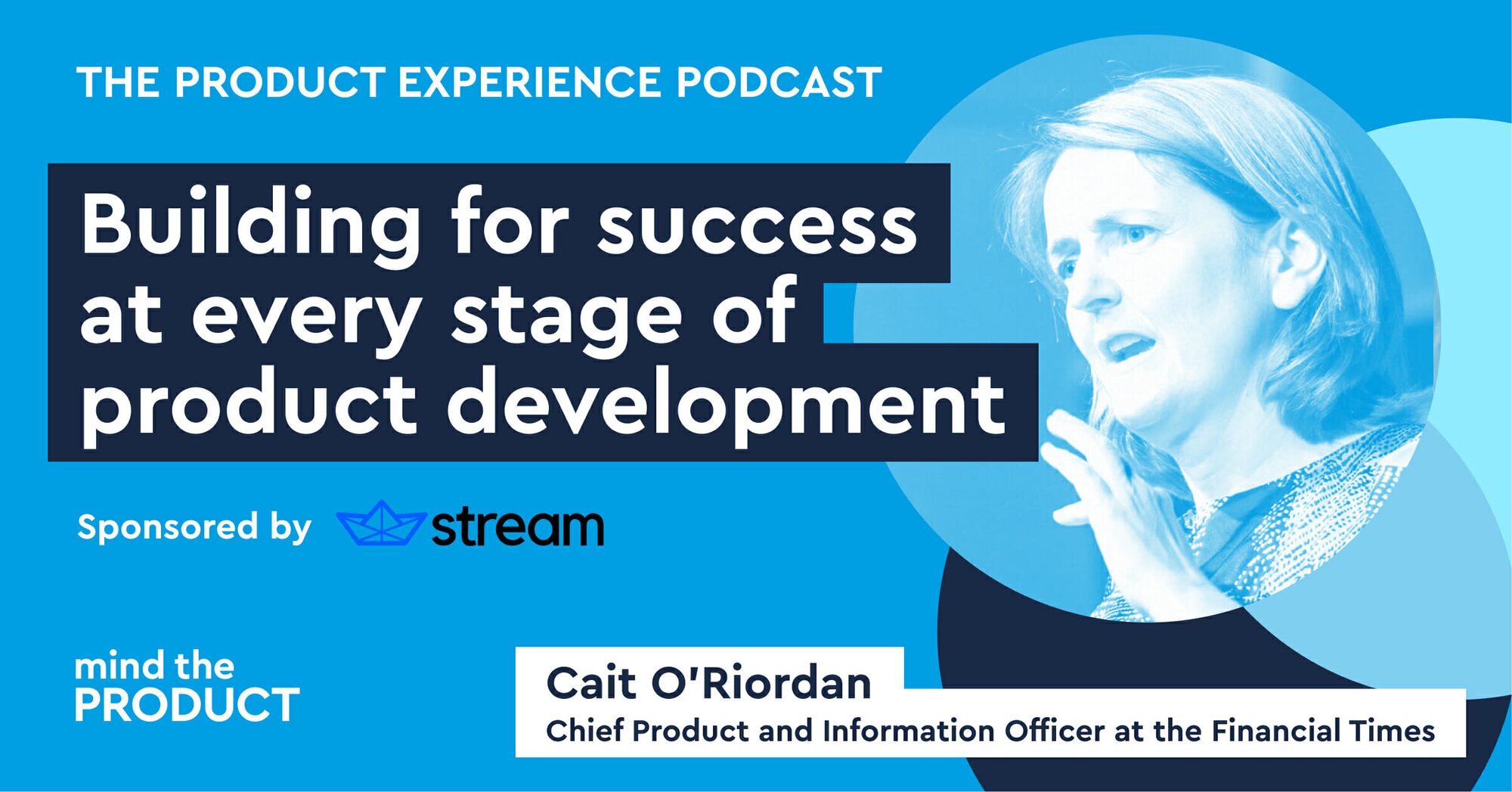Product leader Liz Clow introduces an holistic approach to product leadership, covering strategy, customer centricity, agility, leadership, and execution
One of the questions I’m frequently asked is “how different is it being a product leader in a large, established company versus a start-up?”.
My answer, not surprisingly, is that every company I’ve worked in has been really different. It depends on how well the role of Product is understood,whether or not the company is a digital/tech-first company, and what the growth and profitability of each of those businesses is like. That said, despite some significant differences, there are many similarities in the role of product management – whether in a 100+ year-old media company or a start-up which has existed for only a few years.
I’m going to focus on some of the fundamentals that, in my experience, are adaptable components that encapsulate a product leader’s priorities, regardless of scale. I hope to give some insight into how I’ve tailored these components in different organisations.
SCALE: An holistic approach to product leadership
To articulate my thoughts, I’ve come up with a little acronym (don’t we love them!) to represent the building blocks which prevail regardless of organisation size. I introduce you to SCALE – an holistic approach to product leadership, covering the key pillars of Strategy, Customer centricity, Agility, Leadership, and Execution. It reflects the need to scale products and teams across different stages of company growth, from start-ups to scale-ups to enterprise companies.
Strategy
No surprises that strategy is one of the key components of a product leader's responsibilities, regardless of organisation size. However, your role in leading strategy will vary depending on your environment. The need for a clear, forward-thinking product strategy that aligns with business goals and market opportunities is what we’re aiming for and it’s our role as product leaders to ensure it not only exists but that people also buy into it.
When I’ve joined start-ups, I’ve noticed that strategy (product or otherwise) generally lives in the head of the entrepreneurial founder. After all, they’ve created, funded and launched this company and have been leading the entire strategic vision since the start. Working with start-up founders is an absolute privilege – the way they dedicate themselves to their businesses and their passion for what they do inspires me. But great founders look beyond themselves and see the benefits of a product person complementing their own thoughts and ideas with the creation of a strategy that excites themselves, their team and their investors.
I’ve been able to add most value by working with a founder to understand, translate, and augment that strategy to ensure everyone in the company is clear, aligned and focused on it. I won’t go into detail here about what should be in that strategy, but in the start-ups I’ve worked in I've been able to ensure that a strategy exists, that it’s based on insight, data, market considerations and that it’s ‘just enough’ to align the organisation in detailing the way forwards.
I keep it lean, concise and involve others in creating it. Often, the product strategy actually becomes the strategy within a start-up organisation. Not always, but in my experience what founders crave and employees look for is this single plan that provides alignment in addition to ambition and direction.
In a more established organisation, you might walk in the door and find something quite different. Maybe it's a very detailed plan of the future, maybe a different strategy from each c-suite leader, or maybe very little – more an aspirational view of what the future should be underpinned by a financial forecast that is mistaken for a strategy entirely!
We work in imperfect worlds and rather than fearing this type of environment, I see great opportunities for product leaders to be the conduit for change. They can be the person who links the varying strategies together and aligns the leadership team around a shared view of the upcoming plan. It’s not easy, but my focus in these environments has always been to make steady, incremental change which shows the benefits over time.
Whatever organisation you walk into, the goals we want to set ourselves and the outcomes we want to see underpin the strategy. Like others, I’m a big fan of OKRs (objectives and key results), but only where they help drive the strategy forwards; where they create focus and where they align teams.
I’ve certainly found it easier to implement or improve OKRs in start-up and scale-up environments, but if colleagues are willing to be outcome-focused and embrace change, I think you can also see success in larger companies too. But you might have to start small to prove the benefits.
Customer centricity
Several years ago, I had an interesting conversation with a senior leader at one of the enterprise organisations I worked in. He challenged me on why I planned to meet with real customers to test some prototypes. “Marketing owns the customer, no-one else!,” he said. That [paraphrased] comment was eye-opening. Over the years I’ve reflected on it as a reminder of the important role we play in bringing teams together and breaking down barriers.
I’ve reframed this to influence colleagues that customers or users are not ‘owned’ by anyone, but are instead at the heart of everything we do within a business, regardless of the department we might sit in.
If we’re to ensure that customers are front-of-mind, introducing a culture of sharing customer insight, talking about our users’ needs and opportunities, and working together to create a picture of our users and their behaviours are essential.
In larger organisations, that may well be working with others to build a shared picture and creating processes and opportunities to ensure customer insights aren’t hidden away.
In scale-ups and start-ups, the barriers might be more about demonstrating the value of gaining insights from users and from understanding behaviours – there might be budgetary constraints or a process to establish to ensure insights aren’t lost to the one person who spoke to a user.
Regardless of organisation size, just getting started is so important – regardless of buy-in or budget. Just start speaking to target users and start sharing your insight. Steadily bringing this insight into conversations, presentations, and pitches, is the catalyst for change and over time I truly believe product is an area that can be most influential in encouraging the whole organisation to have a customer-first mindset.
Agility
There’s a belief that start-ups always move at pace and larger organisations move much more slowly. That may be the case overall, but I don’t buy into this simplistic view of how organisations work. To my mind, it comes down to a few different things and what the pace looks like in the environment or industry you’re in.
Start-ups often hire really adaptable individuals – people who can roll up their sleeves and turn their hands to multiple tasks, rather than someone who is only a ‘product manager’ for example. A product manager in a start-up might have a much broader remit – or even a really vague remit as a bias to action and moving quickly are seen as crucial skills.
This level of adaptability can be just what a start-up needs. However, I have also seen this create an environment where a lot of ‘busy work’ becomes embedded into the culture. On observing this in start-up and scale-up environments, I’ve looked to maintain a feeling of pace, while also bringing in an outcome-driven mindset. For example, ‘how fast can we get to the outcome, not just the delivery of something regardless of its impact (whether that be shipping a line of code or even launching in a new market)’.
Another key way of creating an environment that works efficiently and effectively is empowerment. This sets up teams to work together (regardless of their department) through the implementation of shared goals. You should coach people both individually and together in what empowerment is within the specific environment of your organisation.
I’ve seen the empowered team model work effectively within the scale-up space in particular. It creates teams who can self-organise, who can set their OKRs, react to customer insight, and make decisions as a result of that. It creates true agility.
Our role as product leaders is vital here and brings the fast-paced environment that many businesses need and where our talent [our people] can thrive.
Leadership
Introducing a product-led mindset into an organisation is one of the components of SCALE that I think can be the most challenging, but also the most rewarding. One of the reasons forward-thinking founders hire product leaders early on is because they recognise the benefits this can bring. Encouraging a culture that is centred around data, fixated on customers and collaboration are the key fundamentals to being product-led.
It is the product leader who can be most influential here, bringing this mindset and breaking down barriers between teams to create this environment. This doesn’t mean it is only product people who obsess over data or insight, but I think we can be the catalyst for change in bringing this mindset and ensuring these activities are shared and skills are developed.
Encouraging a data-driven culture also centres product leaders at the heart of the organisation and encourages us to think much more broadly than ‘just’ product. I believe that this is recognition that our profession is becoming more widely understood and our skills and experience can be so refreshing alongside more established roles.
Even in larger organisations, you can introduce or augment this way of thinking; encouraging and upskilling your product managers so they can use and interpret data in a way that brings a new dynamic to their discussions and their plans.
The other most important aspect of leadership, in my opinion, is that of leading the product team effectively – ensuring 1:1 coaching is a priority; that the ‘right’ amount of product frameworks and processes are created and streamlined across teams in a way that creates a joined up and high-performing product environment – every company, small or large, needs a bespoke set-up that helps those individuals work well as a team and helps the product strategy develop.
Execution excellence
It doesn’t matter what environment you work in, successfully executing against the strategy, driving towards your outcomes, testing your hypotheses, solving customer pain points and ultimately seeing business success are ultimately what you’ll be held accountable for.
What that looks like varies enormously from company to company – big and small. Our job as product leaders is to ensure we align with our peers in terms of how we’re going to measure success. Having worked in companies where colleagues think more in terms of output (i.e. features) rather than outcomes (i.e. achieving goals), I know how important it is to get this alignment or at least create a dialogue where excellence can be seen in multiple ways.
Regardless, collaborative teams need to be able to move at pace, be empowered to make decisions and release product iterations in a way that demonstrates a team working effectively. This builds confidence in teams and instils confidence in others, when they see how product teams learn from their mistakes, react to something unexpected and improve the product experience for end users and the business.
Wrapping up
One of the things I love most about working in product is the variety – no single company ‘does’ product the same and it’s up to us as leaders to create the right product organisation for our teams and business.
But, regardless of whether you consider yourself a start-up, scale-up or enterprise PM, I truly believe you can be successful in any sized company, so long as you consider and adapt SCALE for that environment.







